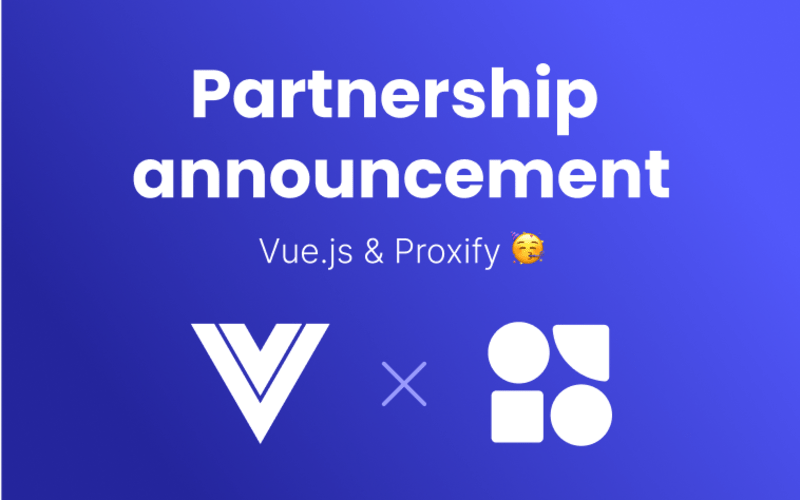Comparing GraphQL and REST APIs is crucial in understanding the best approach for your project. Both GraphQL and REST have their strengths and weaknesses, making it essential to evaluate which one aligns better with your specific requirements.
In this exploration of GraphQL vs REST, we will delve into the differences between these two approaches, shedding light on their functionalities, benefits, and potential use cases. Whether you are a seasoned developer or new to API technologies, this comparison will provide valuable insights to help you make an informed decision on exactly the data used for your next project.
Unpacking the basics
What is GraphQL?
GraphQL is a query language for APIs and a runtime for executing those queries against your data. It's designed to give clients the power to ask for exactly what they need and nothing more. Created by Facebook in 2012 and open-sourced in 2015, GraphQL provides a more efficient, powerful, and flexible alternative to the traditional REST API request itself. It allows clients to define the required data structure, and exactly the same structure is returned from the server, avoiding over-fetching or under-fetching of data. This capability empowers developers to build better, more efficient applications, as it simplifies data requirements from multiple resources into a single query.
What is REST?
REST, or Representational State Transfer, is an architectural style for designing networked applications. It relies on a stateless, client-server, cacheable communications protocol – the HTTP. RESTful APIs are defined by their adherence to REST principles, which dictate how resources are defined and how data retrieval is addressed.
The beauty of REST lies in its simplicity; it uses standard HTTP methods such as GET, POST, PUT, and DELETE, which makes it easy for developers to understand and use. Each URL on a RESTful API represents an object, and the operations you perform on those objects are expressed through the HTTP methods. This approach has been widely adopted due to its scalability and the ease with which developers can integrate with other systems. It's a proven, well-understood technology that's been in use for quite some time.
Core differences explained
Data fetching efficiency
When it comes to data fetching efficiency, GraphQL has a significant advantage over REST. With REST, the shape and size of client requests and the response are determined by the server, often leading to over-fetching of information, where the client gets more data than needed, or under-fetching, where additional requests have to be made to get sufficient data. GraphQL, on the other hand, allows clients to request exactly what they need and nothing more.
This precision significantly reduces the amount of data traveling over the network, which can lead to improved performance, especially in mobile networks or scenarios where bandwidth is a concern. Additionally, GraphQL can aggregate data from multiple sources with a single request, which can simplify the development process and reduce the number of network requests.
Flexibility in queries
GraphQL stands out for its flexibility in queries, offering a significant edge over traditional REST APIs. With GraphQL, clients have the freedom to request exactly what they need, which can include various fields from different resources in a single query. This level of flexibility is not typically available with REST, where the various API requests to endpoints return a fixed data structure.
This means that if you need a specific subset of data, you might have to make requests to multiple endpoints. With GraphQL, you simply specify the requirements in the query, and the server responds with a JSON object that matches your request precisely. This not only streamlines the development process but also reduces the amount of data transferred over the network, optimizing application performance.
Real-world implications
Performance is a critical factor in the discussion of GraphQL vs REST. GraphQL can improve performance by enabling clients to get all the required data in a single request. However, complex queries in GraphQL can also lead to performance bottlenecks if not managed properly, as they may require the server to retrieve large amounts of data and could potentially slow down the system. In contrast, REST APIs might require multiple requests from different endpoints to gather the same data, which can be less efficient but may also avoid overloading a single endpoint per request.
It's important to consider the impact on server performance and the client experience. For instance, a mobile application operating on a slow network would benefit from a GraphQL server's single, tailored request rather than making several calls to a REST API. Both GraphQL and REST have their own performance trade-offs, and the optimal choice may depend on the specific use case and infrastructure constraints.
Ease of maintenance
Maintaining an API is an ongoing challenge, and both GraphQL and REST come with their own maintenance considerations. REST APIs can be easier to maintain due to their simplicity and the widespread understanding of HTTP methods among developers. Changes to REST endpoints typically involve versioning or adding new endpoints, which can be done without affecting existing functionality.
On the other hand, GraphQL APIs are often praised for being easier to evolve over time. Since clients specify exactly what data they need, adding fields or types to a GraphQL API doesn’t necessitate versioning status code or directly impacting existing queries.
However, the complexity of GraphQL queries means that understanding and optimizing the API can require more effort from the development team. The choice between GraphQL and REST may come down to the team's familiarity with each technology and the expected evolution of the application's data requirements.
Adoption and community support
Popularity among developers
The popularity of any technology is often a reflection of its community support and ease of adoption. REST has been around for a longer time and enjoys widespread adoption, making it a familiar technology for many developers. There's a wealth of resources, tools, and best practices available for REST, which can streamline the learning process and problem-solving.
GraphQL, while newer, has rapidly gained popularity, particularly among developers working on complex applications with evolving data needs. Its ability to query for precisely what’s needed, its efficiency and the way it handles relationships between multiple data sources are often cited as reasons for its growing adoption. The GraphQL community is active, with a growing number of resources, libraries, and tools being developed. As a result, developers who invest time in learning GraphQL may find a supportive ecosystem and a technology that's increasingly in demand.
Resources and learning curve
The learning curve associated with any new technology can impact its adoption. REST has been a standard for some time, and many developers are familiar with its concepts and practices. The abundance of resources, including comprehensive documentation and community forums, makes it relatively easy for new developers to get up to speed with REST.
GraphQL's learning curve can be steeper for those new to its concepts, like schema definition and query language. However, the investment in learning GraphQL can pay off with more powerful and flexible interactions with data. While the quantity of learning resources for GraphQL is smaller compared to REST, the quality is often high, and the community is very active.
Tutorials, online courses, and interactive playgrounds are available to help developers understand and master GraphQL. As GraphQL schema adoption grows, so does the ecosystem, with more tools and libraries emerging to support GraphQL development.
Making the right choice
Assessing your project needs
Choosing between GraphQL and REST requires a careful assessment of your project's specific needs. Consider the following factors: the complexity of data operations, the expected scale of data growth, and the agility required in development. If your project involves complex data structures, with frequent interrelations and data exchange and the need for multiple resources in a single request, GraphQL may provide the flexibility and efficiency you need.
For projects that involve simple data transactions or where the simplicity of REST aligns with the project goals, a RESTful architecture might be more appropriate. It's also vital to consider the expertise of your development team. If your team has extensive experience with the REST architecture and your project doesn't demand GraphQL's specific advantages, the learning curve may not justify the transition.
Ultimately, the choice should be driven by the project requirements and the long-term vision for the product, rather than trends or preferences. Carefully weigh all the data and the pros and cons of each to make the most informed decision.
Future-proofing your API strategy
When making a decision on GraphQL vs REST, it's essential to consider not just current needs but also how your API strategy will scale and how exact data will evolve in the future. Adopting GraphQL can be seen as future-proofing your API, thanks to its flexibility and the ease of introducing changes without breaking existing functionality. As your application grows and the shape of your data changes, GraphQL can adapt more easily to these new requirements.
However, REST shouldn't be discounted for its longevity and the predictability of its contract-based approach. If your data interactions are straightforward and unlikely to change significantly, REST provides a stable, well-understood architecture that can serve your project well into the future. In either case, it's crucial to design your own API architecture with best practices in mind, ensuring that it remains maintainable, well-documented, and developer-friendly, which are key factors in the longevity and success of any API strategy.



